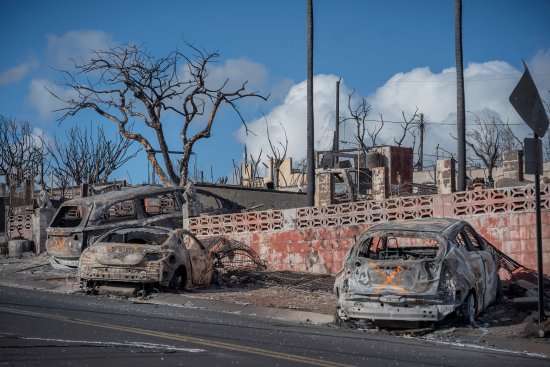
As Maui reels from the nation’s worst wildfires in more than a century, officials are struggling to identify and recover bodies.
As Maui reels from the nation’s worst wildfires in more than a century, officials are struggling to recover and identify bodies.
A week since the blazes first began, identifying bodies is “painstakingly slow,” says Alice Lee, chair of the Maui County Council. That’s because everything—including some bodies—have been burnt down to ashes. “Imagine how hard it is to identify those ashes,” she says.
Police are working to get DNA matches. Of the 111 confirmed deaths so far, barely half a dozen people have been identified, according to Lee as of Aug. 16.
[time-brightcove not-tgx=”true”]FEMA Administrator Deanne Criswell said at a White House press conference Wednesday that at least 40 canine search teams would be on the island, in addition to hundreds of search and rescue personnel. The dogs require extra support because they need frequent rest from navigating the heat and care for their paws from walking through glass and debris, Criswell said. The Environmental Protection Agency and Army Corps of Engineers are starting to clear debris. Thirty specialists from the Department of Health and Human Services mortuary teams are already in Maui; more specialists will arrive from the Department of Defense. Criswell stressed the need to recover bodies and remains in a way that is sensitive to Native Hawaiian cultures and history.
Read More: The History Lost in the Maui Wildfires
Government officials said during a press call Wednesday that the identification process has been complicated. “I’ve already heard from people who say they want to submit DNA but they can’t get over to Maui,” said Adam Weintraub of Hawaii Emergency Management Agency, referring to relatives looking for loved ones. “You’ll start to see more information pushed out about alternative methods to supply that DNA information as we get our reunification and fatality management task force up and running.” Officials said during the call that they don’t have a specific number for missing people, but have heard estimates between 1,100-1,400. The Red Cross is leading reunification efforts.
Asked why so many survivors told the media that they haven’t seen any government personnel or assistance for days, Criswell said that the government has personnel on the ground year-round and embedded with the state as soon as the fire started. She flagged 17 rescues made by the Coast Guard on the day of the wildfires. But Maui’s remoteness and infrastructure destroyed by the fire has made the response more challenging and time-consuming. “Getting materials and people from the continental U.S. to the island presents a little bit more of a challenge,” says Todd James, national spokesperson for the American Red Cross.
“We said, ‘If something ever happened here, we’re 72 hours away from help ever coming,’” said Chief John Pelletier of the Maui Police Department at an August 12 press conference. “And I think we proved that that’s probably pretty accurate.”
Read More: How to Help Those Affected by the Maui Wildfires
Maui County Council Vice Chair Keani Rawlins-Fernandez says aid centers set up by government officials are on the other side of Maui in Paia, “which is 10 miles away from where the fires were, and people can’t drive over because their cars were burned or because they don’t have gas,” NBC News reported.
Another challenge is clearing debris and putting out the fires; not all are extinguished yet. “The infrastructure in the burned areas is gone and communications, electricity, water—all of that has been damaged and there are lots of dangers to be aware of. There are still burning fires and concern about toxic chemicals in the air and in the water,” James of the Red Cross says.
The county is starting the process of shifting survivors in the six emergency shelters to more temporary housing situations such as hotels and Airbnbs. Lee, the county council chair, says there are short-term rentals and hotel rooms available while officials work to secure more permanent housing. The needs are constantly evolving, Lee says. Initially, some of the main demands were for food, diapers, and shampoo. “Now it’s moving to other things; people need generators and appliances,” Lee says.